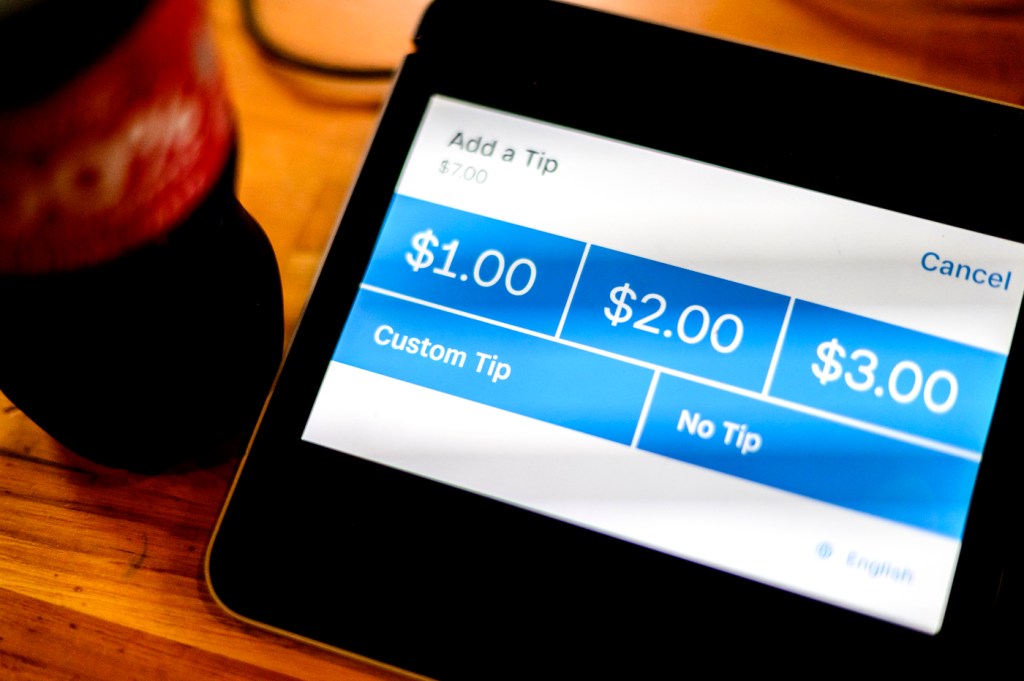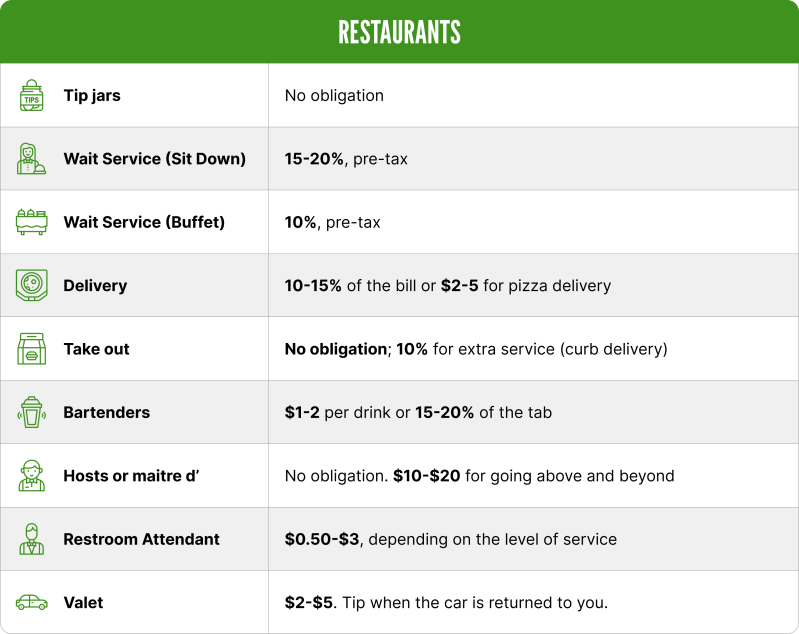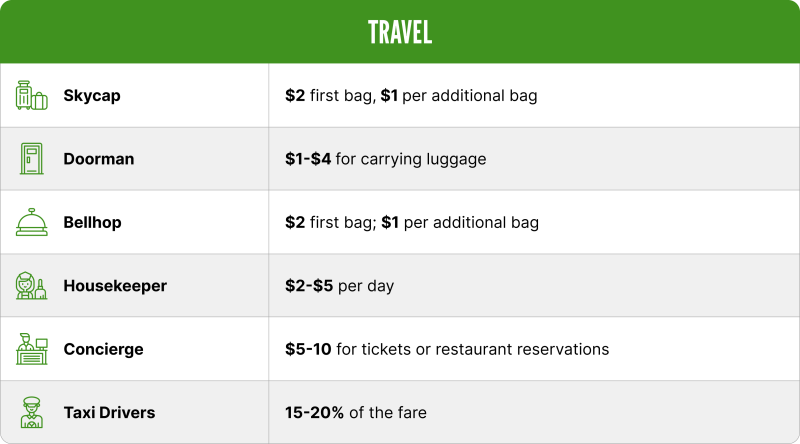How much should I tip—and when? It all depends, but there are some rules, Northeastern expert says

Barista Sydney Henjum may not be in a job associated with high wages, but when the Pavement Coffeehouse server dines out she tips the waitstaff at least 20%.
“I understand how important (tipping) is,” Henjum says. “A huge part of my paycheck comes directly from customer tips.”
Not everybody is so generous.
There is a lot of confusion about who, how and when to tip, not to mention the reason why food servers and other service workers expect to receive gratuities.
Enter Ethan Whittet, an English language specialist with Northeastern’s Global Student Success program, who is holding a 30-minute virtual workshop July 18 on when to tip and how much.
“It’s really designed for students who are new to the U.S. or are coming to Northeastern from another country and might be unfamiliar with tipping practices here,” Whittet says.

But he says that with the COVID-19 pandemic officially ended, even people accustomed to U.S. tipping practices are confused about how much to tip.
“There were many restaurants that were really in financial trouble for a while. I think there was a general movement among customers to tip more than they might have in the past. And now that we’re moving out of COVID, people are uncertain about whether they should continue that.”
Whittet says he recommends people receiving sitdown restaurant service to tip a minimum of 20% of the pretax bill—adding more if the service was exceptional.
It’s important that students grabbing a bite to eat realize that their $20 bill will not cover the cost of a $19 entree once a tip is factored in, Whittet says.
“I tell students that the reason we have tipping is different people get different wages,” Whittet says.
The Massachusetts minimum wage for some service industry workers such as restaurant servers is $6.75 an hour compared to $15 an hour for employees in other industries.
“The tip is not just a bonus for exceptional service; it is baked into the wages that these workers make and we need to be respectful of that,” Whittet says.
Not just servers
The list of other service workers who commonly get tipped is a long one, at least in the U.S.
It includes bartenders, casino dealers, concierges, delivery people, doormen, golf caddies, limousine drivers, maître d’s, washroom attendants, bellhops, massage therapists, parking valets, porters, restaurant musicians, shoe shiners, taxicab drivers and tour guides.
Tipping is not as widely practiced in other countries, Whittet says.
A chart he is distributing to students attending the workshop shows the range of food server tipping rates across the globe, with 10% being the going rate across much of Europe and the Caribbean, but with no or little tipping expected in China, Japan and South Korea.
Colorado lawmakers tried to widen the pool of tipped workers this spring by passing a law prohibiting most employers from punishing workers who accept tips, with some exceptions including health and elder-care workers.
The idea was to put more money in the pockets of low-wage earners such as grocery store baggers and fast-food employees, but Colorado Gov. Jared Polis vetoed the bill, saying it would have unintended consequences.

Source: Emily Post Etiquette tipping guide
How much to tip
In addition to tipping full service restaurant workers 20%, Whittet recommends tipping baristas $1 per cup of coffee, adding an extra buck for intricate lattes, and tipping bartenders $1-2 per drink.
When traveling, people should tip baggage handlers $3 per bag, including curbside at the airport, where workers are exposed to weather, Whittet says.
The rule of thumb for hotel housekeepers is $5 per night of stay, while concierges merit $5 to $15 per encounter, depending on how involved their assistance is, he says. It’s the difference between recommending a restaurant and making the reservation and arranging for transportation.
Whittet says he refers to the Emily Post Etiquette tipping guide for much of his information, but is inclined to be a little more generous himself.
The Emily Post guide says the tipping rate for aestheticians—hairdressers, massage therapists, manicurists— is 15 to 20% while food deliverers get 10 to 15%.
Whittet says he would be inclined toward 20% for those services, especially for food deliverers working in bad weather.
“If it’s a thunderstorm, if it’s a blizzard and somebody’s driving across town with your food, it makes sense to be generous.”

Source: Emily Post Etiquette tipping guide
When cash is king
Some customers find touch screens with tipping prompts irritating, especially when the prompts include suggestions of 28% for a cup of coffee.
Whittet says the screens are replacing tip jars since so few customers carry cash.
He says people can customize the tips to reflect monetary amounts.
They can also avoid the touch-screen experience entirely by carrying cash, especially single dollar bills.
Since so many monetary transactions are cashless, it’s important to plan ahead for circumstances when a cash tip is appropriate, Whittet says.
“Having a few bucks in your pocket is a good habit,” he says.
It’s a good way to avoid being caught off guard and tipless when someone bundles a Christmas tree and secures it to your car ($5 according to a guide in Real Simple) or you come to the end of a walking tour booked online ($5 to $10, according to ExperienceFirst).

Source: Emily Post Etiquette tipping guide
Before you tip, check your receipt
Less common in the U.S. than in other countries, adding a service charge to a bill is a practice adopted by many restaurants and bars in Miami—so be sure to check your receipt.
Typically the service charge in Miami is 18 to 22%, with space left for an additional tip at the customers’ discretion.
While there is some pushback against the American custom of tipping, there’s also evidence it is spreading.
“South Park” creators Matt Stone and Trey Parker banned tipping when they reopened Denver’s famed Casa Bonita restaurant, opting instead to pay servers $30 an hour.
But in Australia—previously considered a no-tip zone—an increasing number of Australians say they are likely to tip, a trend the New York Times says was driven by a desire to help the pandemic-stricken restaurant industry.
“I always remember what my grandfather said—’Be generous when you can,’” Whittet says. “I think that’s a good attitude to bring.”
Like Henjum, Whittet knows the impact tipping has on servers’ wallets.
“I used to be a pizza delivery driver and I also scooped ice cream, so I know what it’s like to rely on tips as a major part of your income.”
Cynthia McCormick Hibbert is a Northeastern Global News reporter. Email her at c.hibbert@northeastern.edu or contact her on Twitter @CynthiaHibbert.






